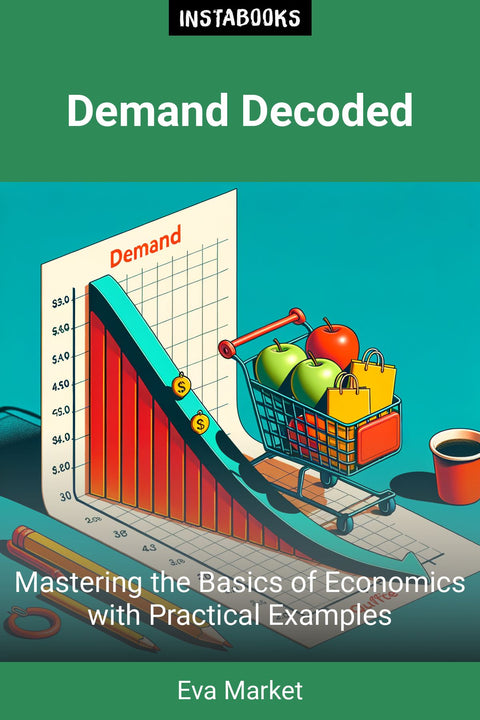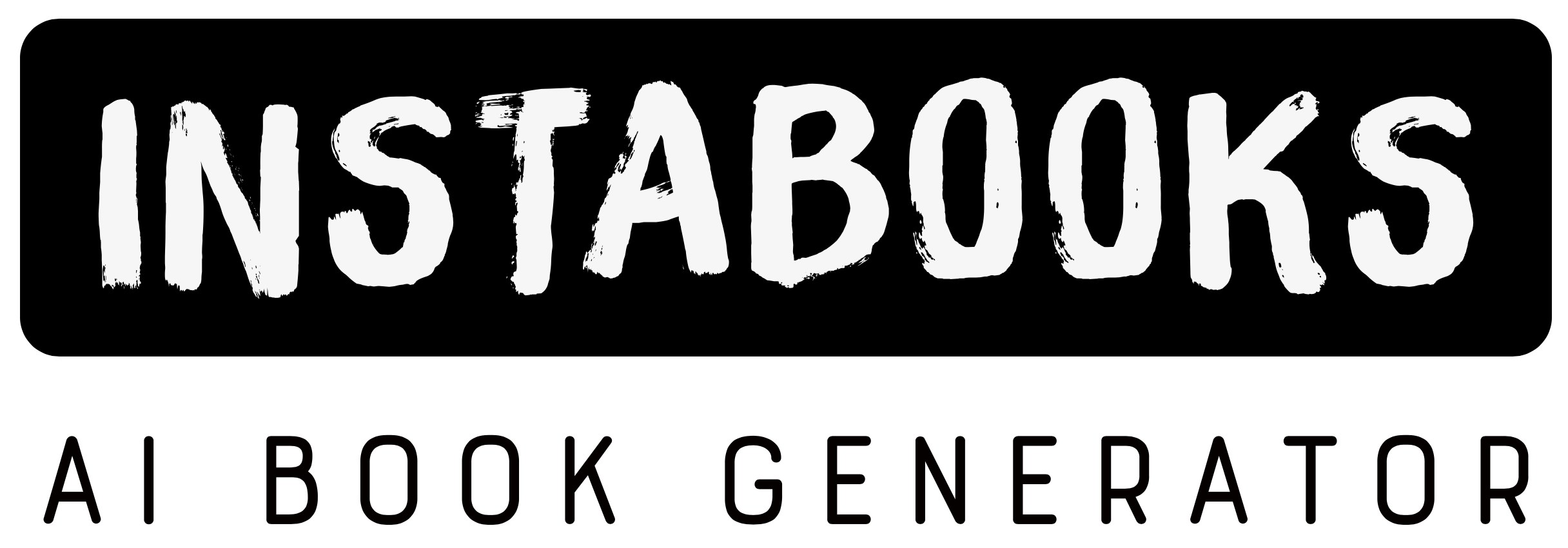
Demand Decoded
Mastering the Basics of Economics with Practical Examples
Included:
✓ 200+ Page AI-Generated Book
✓ ePub eBook File — read on Kindle & Apple Books
✓ PDF Print File (Easy Printing)
✓ Word DOCX File (Easy Editing)
✓ Hi-Res Print-Ready Book Cover (No Logo Watermark)
✓ Full Commercial Use Rights — keep 100% of royalties
✓ Publish under your own Author Name
✓ Sell on Amazon KDP, IngramSpark, Lulu, Blurb & Gumroad to millions of readers worldwide
AI Book Preview
Below you'll find a comprehensive preview of all chapters in this book. Each section provides a glimpse into the key concepts, practical insights, and valuable knowledge you'll gain.
Chapter 1: Introduction to Demand
What is Demand?
Demand is the foundation of economics, representing how much of a product or service consumers are willing and able to buy at various prices. This section explores the factors that shape demand and how it influences market dynamics in everyday life.
The Importance of Demand in Economics
Demand drives economic activity by shaping what is produced, how much it costs, and who can access it. Understanding its role reveals why businesses and governments prioritize consumer needs and preferences in decision-making.
Real-World Examples of Demand
Real-world examples of demand reveal how consumer behavior influences prices and availability in everyday markets, from smartphones to seasonal produce. By analyzing these scenarios, readers will see how economic principles shape the decisions of both buyers and sellers.
Chapter 2: The Law of Demand
Understanding the Law of Demand
The Law of Demand reveals that as the price of a good or service decreases, consumers tend to buy more of it, while higher prices lead to reduced purchases. This foundational principle helps explain everyday shopping behavior and market dynamics.
Visualizing the Demand Curve
The demand curve is a powerful visual tool that illustrates the relationship between price and quantity demanded, showing how consumers respond to changes in price. By analyzing its shape and slope, you’ll gain insights into the fundamental principles of demand and how it shapes market behavior.
Factors Affecting Demand
Understanding the factors that influence demand—such as income levels, consumer preferences, and prices of related goods—is essential for predicting how markets behave. This section explores these key drivers and their real-world impact on decision-making and purchasing patterns.
Chapter 3: Demand in Action
Grocery Store Pricing
Grocery store pricing strategies reveal how demand influences everyday decisions, from discounts on seasonal items to the placement of essentials. By analyzing these tactics, you’ll uncover the hidden economic principles shaping consumer behavior and store profits.
Car Dealership Strategies
Car dealerships use dynamic pricing, promotions, and customer incentives to influence demand and maximize sales. Discover how these strategies reflect core economic principles and shape consumer behavior in the automotive market.
Coffee Shop Price Consistency
Consistency in pricing at a coffee shop demonstrates how businesses balance customer expectations with profit margins, ensuring steady demand. By analyzing real-world examples, readers will uncover the economic principles behind pricing strategies and their impact on consumer behavior.
Chapter 4: Graphical Representation of Demand
Plotting the Demand Curve
The demand curve visually illustrates the relationship between price and quantity demanded, showing how consumers respond to changes in market conditions. By learning to plot and interpret this curve, you’ll gain a clear understanding of fundamental economic principles like elasticity and market behavior.
Interpreting the Demand Curve
The demand curve visually represents the relationship between price and quantity demanded, helping you understand how consumer behavior changes with price fluctuations. By interpreting its slope and shifts, you’ll uncover insights into market dynamics and real-world economic decisions.
Common Mistakes to Avoid
Misinterpreting axes and confusing shifts versus movements along the demand curve are frequent errors that can lead to incorrect analysis. This section highlights these common pitfalls and provides clear strategies to ensure accurate graphical representation of demand.
Chapter 5: Practical Applications
Setting Optimal Prices
Understanding how to set optimal prices ensures businesses maximize profits while keeping customers satisfied. This section explores the relationship between demand, costs, and pricing strategies through real-world examples to help you grasp this essential economic concept.
Managing Inventory
Effective inventory management ensures businesses meet customer demand without overstocking or running out of products, balancing costs and efficiency. Discover how economic principles like supply and demand shape strategies for maintaining the right inventory levels.
Understanding Market Equilibrium
Market equilibrium is the point where supply meets demand, ensuring prices stabilize and goods are efficiently distributed. By exploring real-world examples, you’ll uncover how this balance impacts everyday decisions and shapes the economy.
Chapter 6: Demand in Everyday Life
Price Changes and Consumer Behavior
Price changes directly influence consumer behavior, shaping decisions on what, when, and how much to buy. This section explores how shifts in prices affect purchasing patterns and reveals the underlying economic principles that drive everyday choices.
The Role of Demand in Decision Making
Demand plays a crucial role in shaping everyday decisions, from choosing products to allocating personal resources. By understanding how demand influences consumer behavior, you’ll gain practical insights into making smarter economic choices in your daily life.
Case Studies from Real Life
Real-life case studies reveal how demand shapes everyday decisions, from consumer behavior to market trends, offering a practical lens to understand economic principles. By exploring these examples, readers will see how demand influences prices, availability, and choices in the world around them.
Chapter 7: The Demand Curve Explained
Reading the Curve
The demand curve visually represents the relationship between the price of a good and the quantity consumers are willing to purchase, helping you understand market behavior at a glance. By reading the curve, you’ll uncover how price changes influence buying decisions and shape economic trends.
Shifts vs. Movements Along the Curve
Understanding the difference between shifts and movements along the demand curve is crucial to analyzing how changes in price and external factors affect consumer behavior. You’ll learn to identify what causes the curve to shift versus what simply moves us along it, using real-world examples to solidify your grasp.
Analyzing Demand Changes
Discover how shifts in consumer behavior, income, and market trends influence the demand curve through real-world examples. Learn to predict and analyze these changes to understand their impact on pricing and availability in the economy.
Chapter 8: Price Elasticity of Demand
What is Price Elasticity?
Price elasticity of demand measures how sensitive the quantity demanded of a good is to changes in its price, revealing consumer responsiveness. You’ll explore how to calculate it and understand why it’s crucial for businesses and policymakers.
Calculating Elasticity
Calculating price elasticity of demand reveals how sensitive consumers are to price changes, measured by dividing the percentage change in quantity demanded by the percentage change in price. Mastering this formula helps predict shifts in demand and make informed economic decisions.
Elastic vs. Inelastic Demand
Elastic demand occurs when consumers are highly responsive to price changes, while inelastic demand reflects minimal sensitivity to price fluctuations. Understanding these concepts helps predict how changes in pricing affect consumer behavior and business revenue.
Chapter 9: Demand in Different Markets
Consumer Goods
Consumer goods are the everyday products people buy to satisfy their needs and wants, shaping the foundation of demand in markets. Discover how consumer preferences, income levels, and price changes influence the demand for these essential items.
Luxury Products
Luxury products defy traditional demand principles, as their desirability often increases with higher prices due to their perceived exclusivity and status. Understanding this unique market behavior reveals how consumer psychology and branding shape demand for high-end goods.
Essential vs. Non-Essential Goods
Understanding the difference between essential and non-essential goods is crucial for analyzing consumer behavior and market demand. You'll explore how these categories influence pricing, elasticity, and purchasing decisions in real-world scenarios.
Chapter 10: Demand and Supply
The Relationship Between Demand and Supply
Understanding the relationship between demand and supply is essential for grasping how prices are determined in a market economy. This section explores how changes in consumer demand and producer supply interact to influence market equilibrium and pricing decisions.
Market Equilibrium
Market equilibrium occurs when the quantity demanded equals the quantity supplied, resulting in a stable price that satisfies both buyers and sellers. Understanding this balance helps explain how markets naturally adjust to shifts in demand and supply.
Implications of Disrupt in Equilibrium
Disruptions in equilibrium reveal how shifts in demand or supply impact market prices and quantities, leading to shortages or surpluses. Understanding these dynamics helps predict real-world economic outcomes, from price spikes during crises to overproduction in agriculture.
Chapter 11: Demand in the Global Economy
Global Market Trends
Understanding global market trends reveals how consumer behavior and economic shifts shape demand across different regions and industries. By examining real-world examples, readers will gain insights into the interconnected forces driving the global economy.
International Trade and Demand
International trade shapes demand by connecting markets across borders, influencing what consumers buy and how businesses produce goods. Readers will explore how global trade agreements, tariffs, and exchange rates impact demand patterns and economic decision-making.
Demand in a Digital Age
The digital age has transformed how demand is shaped, driven by technology, online platforms, and data-driven consumer insights. Explore how e-commerce, social media, and algorithms influence purchasing behavior and redefine traditional economic principles.
Chapter 12: Conclusion and Key Takeaways
Recap of Key Concepts
The key concepts of demand—such as the law of demand, determinants of demand, and elasticity—are recapped to reinforce your understanding of how consumer behavior shapes markets. Practical examples illustrate how these principles apply to real-world economic decisions and everyday scenarios.
Applying Demand Concepts in Real Life
Discover how to use demand principles to make smarter decisions in everyday life, from budgeting to shopping. Learn to recognize demand shifts and predict market trends with real-world examples that bring economic concepts to life.
Final Thoughts
Understanding demand is the cornerstone of making informed economic decisions, and mastering its principles empowers you to navigate real-world scenarios with confidence. This section ties together key insights and leaves you with actionable strategies to apply your knowledge effectively.
Target Audience
This book is written for high school students seeking to understand the basic concepts of demand and its practical applications in economics.
Key Takeaways
- Understand the fundamental concept of demand and its importance in economics.
- Learn how to interpret and visualize the demand curve.
- Explore real-world examples of demand in various markets.
- Discover the law of demand and factors affecting demand.
- Apply demand concepts to set optimal prices and manage inventory effectively.
